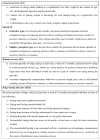Eating Disorders and Gastrointestinal Diseases
- PMID: 31842421
- PMCID: PMC6950592
- DOI: 10.3390/nu11123038
Eating Disorders and Gastrointestinal Diseases
Abstract
Eating disorders (ED) are frequently associated with a wide range of psychiatric or somatic comorbidities. The most relevant ED are anorexia nervosa (AN), bulimia nervosa (BN), and binge eating disorders (BED). Patients with ED exhibit both upper and lower gastrointestinal (GI) symptoms. Evidence of alterations throughout the GI tract in ED will be analyzed given the role of the GI tract in food intake and its regulation. It remains a matter of debate whether GI disorders are inherent manifestations of ED or the results of malnutrition occurring from ED. Moreover, recent clinical studies have highlighted the growing role of intestinal microbiota in the pathogenesis of ED, making it possible to hypothesize a modulation of intestinal microbiota as a co-adjuvant to standard therapy. The aim of this review is to analyze the link between ED and GI diseases and to present, where known, the potential key factors underlying these conditions. Conclusions: The presence of GI disorders should be investigated in patients with ED. Screening for ED should also be encouraged in individuals seeking treatment for unexplained GI complaints to better address therapeutic issues that surround these difficult medical conditions.
Keywords: anorexia nervosa; binge-eating disorders; bulimia nervosa; gastrointestinal diseases.
Conflict of interest statement
The authors declare no conflicts of interest
Figures



References
-
- Association A.P. DSM—5. American Psychological Association; Washington, DC, USA: 2015. Diagnostic and statistical manual of mental disorders.
Publication types
MeSH terms
LinkOut - more resources
Full Text Sources
Medical

